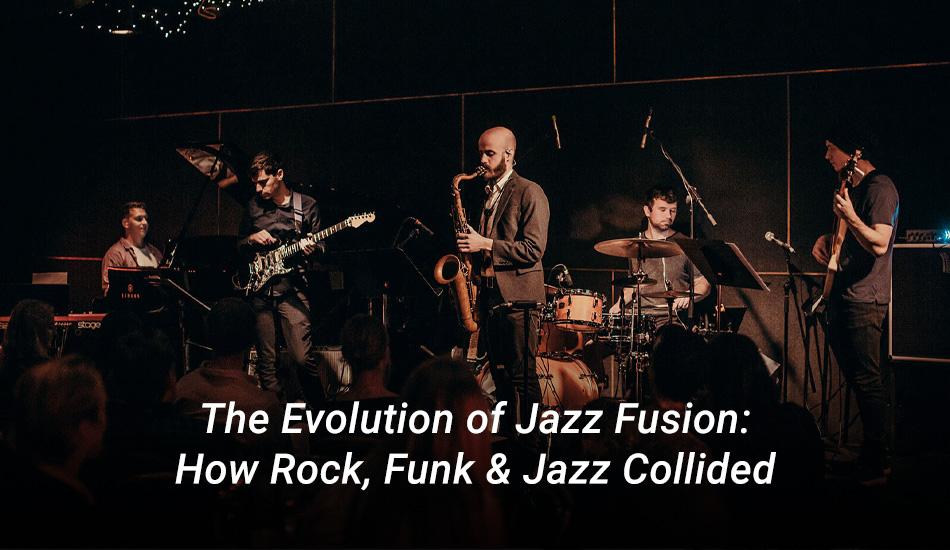Jazz fusion stands for a quite interesting musical direction related to the combination of jazz with some rock, funk, R&B components, and so on. This innovative sound first appeared at the end of the 1960s and, since then, has been a significant part of jazz, affecting both instrumentalists and the best jazz vocalists.
Sometimes jazz fusion music is more popular as a “jazz-rock” style of music that attempts to push boundaries within the jazz genre. While jazz plays acoustic instruments such as the saxophone and trumpet, the fusion form plays electric ones ranging from synthesizers to electric guitars. However, improvisation and intricate harmonies are still essential to the style.
What is Jazz Fusion?
Jazz fusion is characterized by the use of rock instruments, funk rhythms, an emphasis on improvisation, and the strong presence of instrumental solos. Typically, electric pianos, synthesizers, distorted guitars and drum machines are used. Many famous fusion musicians are iconic because they exhibit virtuoso performances of their instruments.
History Of Jazz Fusion
Jazz fusion emerged in the late 1960s as prominent jazz musicians like Miles Davis began experimenting with elements of rock and funk. Almost all the early pioneers of fusion had some connection to Miles Davis.
In the 1970s, fusion became more closely aligned with progressive rock. Guitarists like John McLaughlin and keyboardists like Chick Corea helped solidify guitar and keyboards as lead instruments. Groups like the Mahavishnu Orchestra and Return to Forever expanded the boundaries of the genre.
Rock, Funk, and Jazz Create Fusion
Jazz fusion blends the modal jazz and funk grooves of the 1960s with the grittier soloing and rock rhythms of the time. Musicians were looking to create a new, contemporary sound that would appeal to wider audiences.
In the 1960s, rock music was gaining immense popularity and threatening the relevance of jazz. Even virtuoso musicians like Eric Clapton and Jimi Hendrix were moving towards rock. This led jazz artists to incorporate elements of rock like electric instruments, amplification, and rhythmic drive. They also pulled from the popular funk genre, with its propulsive rhythms and strong grooves.
By fusing modal jazz harmonies, funk rhythms, and rock instrumentation and intensity, innovative musicians developed an exciting new style that became known as fusion. This genre-blending approach allowed jazz artists to modernize their sound and reach wider audiences without sacrificing improvisation or compositional complexity.
Jazz Fusion Artists
Some of the most important jazz fusion musicians include:
- Miles Davis – The legendary trumpeter, was at the forefront of fusing jazz, rock, and funk. His pioneering albums In A Silent Way and Bitches Brew featured electric instruments and rock rhythms anchored by jazz improvisation. Davis’ fusion experiments laid the groundwork for countless others.
- John McLaughlin – This English guitarist founded The Mahavishnu Orchestra, one of the most influential early fusion bands. McLaughlin blended jazz with psychedelic rock and Indian classical music. His lightning-fast solos and complex, odd-meter riffs expanded the horizons of jazz guitar.
- Return To Forever – Led by keyboardist Chick Corea and bassist Stanley Clarke, produced dynamic instrumental fusion in the 1970s. They incorporated Latin music and classical elements while retaining the melodicism and virtuosity of jazz. Albums like Romantic Warrior are fusion essentials.
- Herbie Hancock – As a member of Miles Davis’ quintet, Hancock pioneered modal jazz before venturing into funk-fusion with his band, The Headhunters. Head Hunters remains one of the best-selling jazz fusion albums with its infectious grooves and advanced improvisation.
- Chick Corea -From playing with Miles Davis, this gifted pianist has been a pioneer infusion. Corea, as co-leader of Return To Forever and a stupendous solo player, has developed the harmonic and rhythmic vocabulary of fusion more than almost anyone else. His creativity is seemingly limitless.
Some other prominent fusion artists are Larry Coryell, Pat Metheny, Jean-Luc Ponty, Brand X, Soft Machine and Frank Zappa. The boundaries of jazz fusion are in a state of constant evolution as contemporary generations of innovative musicians push them further.
Conclusion
Jazz fusion is alive today as musicians continue to test the boundaries of improvisation and genre-blending. The groundbreaking albums that were made at the peak of fusion during the 1970s, such as Bitches Brew and Romantic Warrior, rank among the greatest jazz recordings ever created, remaining an integral part of any quantum curriculum.
Miles Davis, Chick Corea, John McLaughlin and other pioneers of fusion left a tremendous legacy of revolutionary music that tore down genre barriers. Their courageous artistic visions established a new modern sound of jazz and opened the door for thousands of art form innovations, influencing musicians of any type and the best jazz vocalists. Albums like Bitches, Brewhead Hunters and Romantic Warrior are considered classics and among the greatest jazz albums ever produced. Jazz fusion is an exceptional mixture of improvisation, rock instrumentation, funk grooves and genre-transcending experiments. There is a continual source of inspiration with talented musicians who have shaped and developed this unique sound over the decades.

